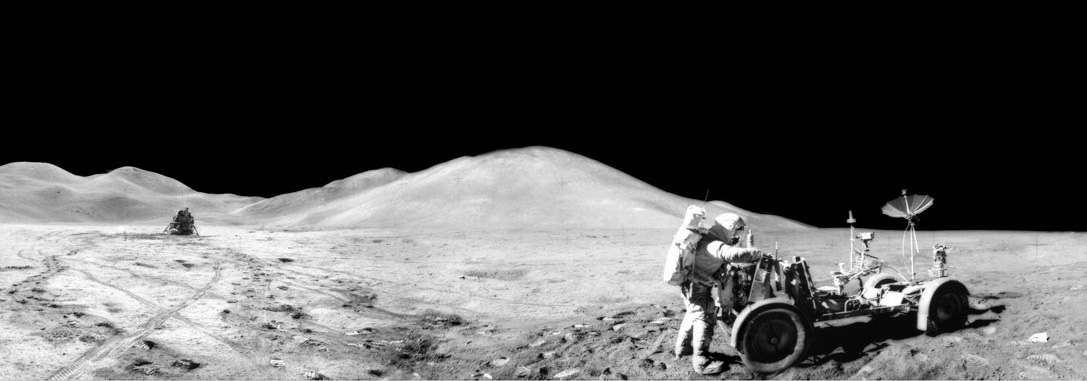Difference between revisions of "January 13, 2004"
| Line 17: | Line 17: | ||
</tr> | </tr> | ||
</table> | </table> | ||
| − | |||
<table class="story" border="0" bgcolor="#FFFFFF" width="90%" cellpadding="10" align="center"><tr><td> | <table class="story" border="0" bgcolor="#FFFFFF" width="90%" cellpadding="10" align="center"><tr><td> | ||
<p class="story" align="center"><b>Apollo 15 Panned</b></p> | <p class="story" align="center"><b>Apollo 15 Panned</b></p> | ||
| Line 32: | Line 31: | ||
</p> | </p> | ||
<p class"story"> <b>Tomorrow's LPOD:</b> First and Last</p> | <p class"story"> <b>Tomorrow's LPOD:</b> First and Last</p> | ||
| − | |||
</table> | </table> | ||
</td> | </td> | ||
Revision as of 16:53, 4 January 2015
Apollo 15 Panned
Apollo 15 Panned |
Image Credit: Moonpans (and Apollo 15 astronaut Jim Irwin) |
|
Apollo 15 Panned It was so long ago that it seems science fiction rather than fact, but humans have been to the Moon. After the grab and go, proof of concept Apollo 11 mission, astronauts progressively spent more time on the Moon with more sophisticated tools and experiments. In this 1971 Apollo 15 panorama taken by Lunar Module Pilot Jim Irwin, Commander Dave Scott is seen packing core tube samples into the Lunar Rover, with the Lunar Module (LM) Falcon to the left and the towering Apennine Mountains in the background. They are at Station 8 in a series of geologic traverses that totaled 27.9 km and resulted in the collection of 76.8 kg of lunar samples. Technical Details: Related Links: Tomorrow's LPOD: First and Last |
Author & Editor: Technical Consultant: A service of: |
COMMENTS?
Click on this icon File:PostIcon.jpg at the upper right to post a comment.




